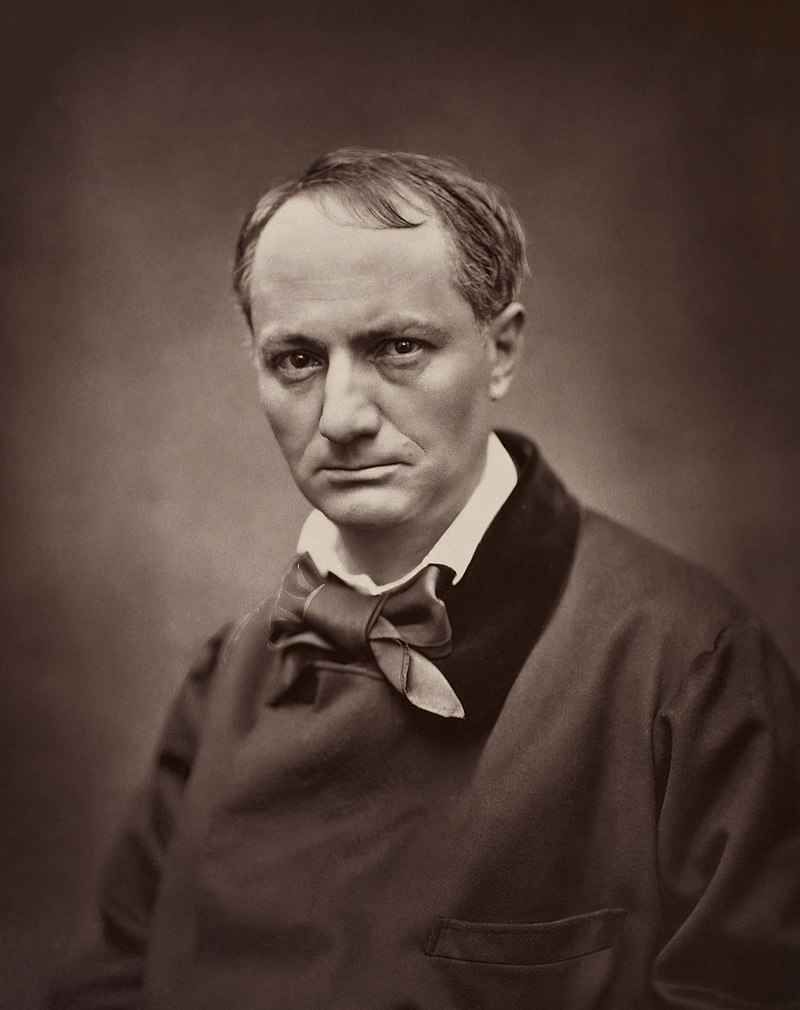
Charles Baudelaire by Étienne Carjat, 1863
Charles Baudelaire (1821-1867) was an influential French poet, essayist, and art critic who played a significant role in shaping modern art and literature. He is best known for his collection of poems titled “Les Fleurs du Mal” (The Flowers of Evil) and his essays on art, particularly his book “The Painter of Modern Life.”
Baudelaire’s contributions to art are significant for several reasons:
- Championing the concept of modernity: Baudelaire embraced the rapid social, cultural, and technological changes of the 19th century and saw them as an opportunity for artistic expression. He advocated for artists to engage with the present and capture the fleeting and transitory nature of urban life, often referred to as the “modern.”
- Influencing Symbolism: Baudelaire’s poetry and critical writings laid the groundwork for the Symbolist movement that emerged in the late 19th century. Symbolist poets and artists sought to convey emotions, moods, and ideas through symbols and metaphors, rejecting the strict adherence to reality prevalent in earlier artistic movements.
- Elevating the status of everyday life: Baudelaire believed that artists should find beauty and meaning in the ordinary and mundane aspects of life. He celebrated the cityscape, its crowds, and the modern urban experience, valuing the depiction of the modern metropolis as a subject worthy of artistic exploration.
- Redefining the role of the artist: Baudelaire emphasized the importance of subjectivity and individuality in art. He believed that the artist should be an active observer and interpreter of the world, expressing their unique perspective through their work. This notion of the artist as a visionary and interpreter of the modern world had a lasting impact on subsequent artistic movements.
- Art criticism and promotion: Baudelaire’s critical writings, particularly in “The Painter of Modern Life,” provided insightful analyses of contemporary artists such as Edouard Manet, Constantin Guys, and Gustave Courbet. His support and promotion of these artists helped bring attention to their work and contributed to the development of modern art.
Baudelaire’s ideas and writings on art were highly influential in the late 19th and early 20th centuries, shaping the direction of modernism and paving the way for subsequent movements such as Impressionism, Post-Impressionism, and Symbolism. His emphasis on individual expression, capturing modernity, and finding beauty in the everyday continue to resonate with artists and thinkers today.
